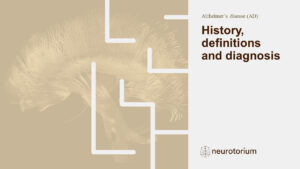Several AD therapies under investigation target Aβ or its aggregates and can generally be divided into four therapeutic aims: 1) to reduce Aβ generation; 2) to enhance degradation and clearance of Aβ and its aggregates; 3) to neutralize soluble Aβ monomers or the resulting toxicity; 4) to directly inhibit Aβ aggregation.1 As of August 2023, aducanumab and lecanemab are the only two FDA approved antibody-based drugs, while investigation of 38 therapies have been discontinued due to ineffectiveness or toxic side effects.1-3
Acess our Slide Deck on treatment principles of AD and learn more about pharmacological treatment of AD.





